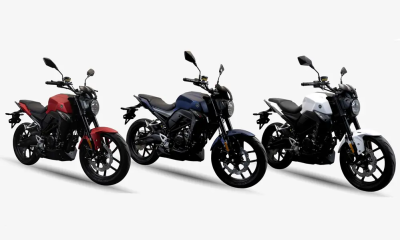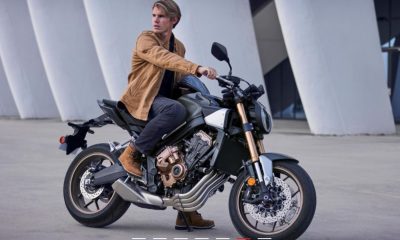
It was this carbon fiber swingarm that got the JEC Innovation Award to BMW Motorrad
Lightweight materials like titanium, magnesium or carbon fiber are being used by motorcycle manufacturers to build some of the most exotic bikes we can see on the road or track. But using those materials comes at a cost: production is very limited and the price of these special parts is very high.
But BMW Motorrad has found a way to produce parts in carbon fiber that won’t be so expensive and can be scalable.
This solution was applied in the development and production of a new carbon fiber swingarm, and now the JEC Group, the world’s leading specialist organization for the development, manufacture and processing of composite materials, recognized the German brand with the 2018 JEC Innovation Award in the Leisure & Sports category for the development and manufacture of a rear swinging arm made of carbon fiber.
It’s not the first time that BMW Motorrad is recognized for using carbon fiber in a motorcycle component. If you remember, in 2016, during the EICMA motorcycle show in Milan, BMW showed the HP4 Race, a track only bike, that has a carbon fiber main frame.
Now BMW Motorrad goes a step forward.
The project MAI hiras+handle was sponsored by the German Federal Ministry of Education and Research as part of the leading-edge cluster MAI Carbon. The aim of this cooperative venture was to develop a process that enabled the cost-effective volume-production use of carbon fibre composite materials (CFP) in structural components subject to high levels of continuous stress.

In the case of the swingarm that received the JEC Innovation Award, BMW also found a way to establish a cost-efficient manufacturing process suitable for the large-scale production of injection mould components made of carbon fiber reinforced plastic with CFP tape reinforcements using thermoplastic material.
Project manager Elmar Jäger explains that ” The visible motorcycle rear swingarm was ideal for our project since the forces at work are immediately evident. Our production technique uses CFP in the form of high-strength endless fibers where this is required by the stress pattern, while an injection mould part with short CFP recycling fibers is used where the stress levels are not as high. In this way, we developed a cost-efficient design that can be scaled according to requirements by inserting endless fibers with varying levels of strength in the same tool. These were the points that impressed the international jury”.
For the moment we won’t see any road bike using this carbon fiber swingarm, but BMW Motorrad will probably show how good this special part is by introducing an update on the HP4 Race. Hopefully, if all goes according to plan, we’ll see the carbon swingarm making its way into road models in the next few years.





























Facebook
Instagram
X (Twitter)
YouTube
LinkedIn
RSS